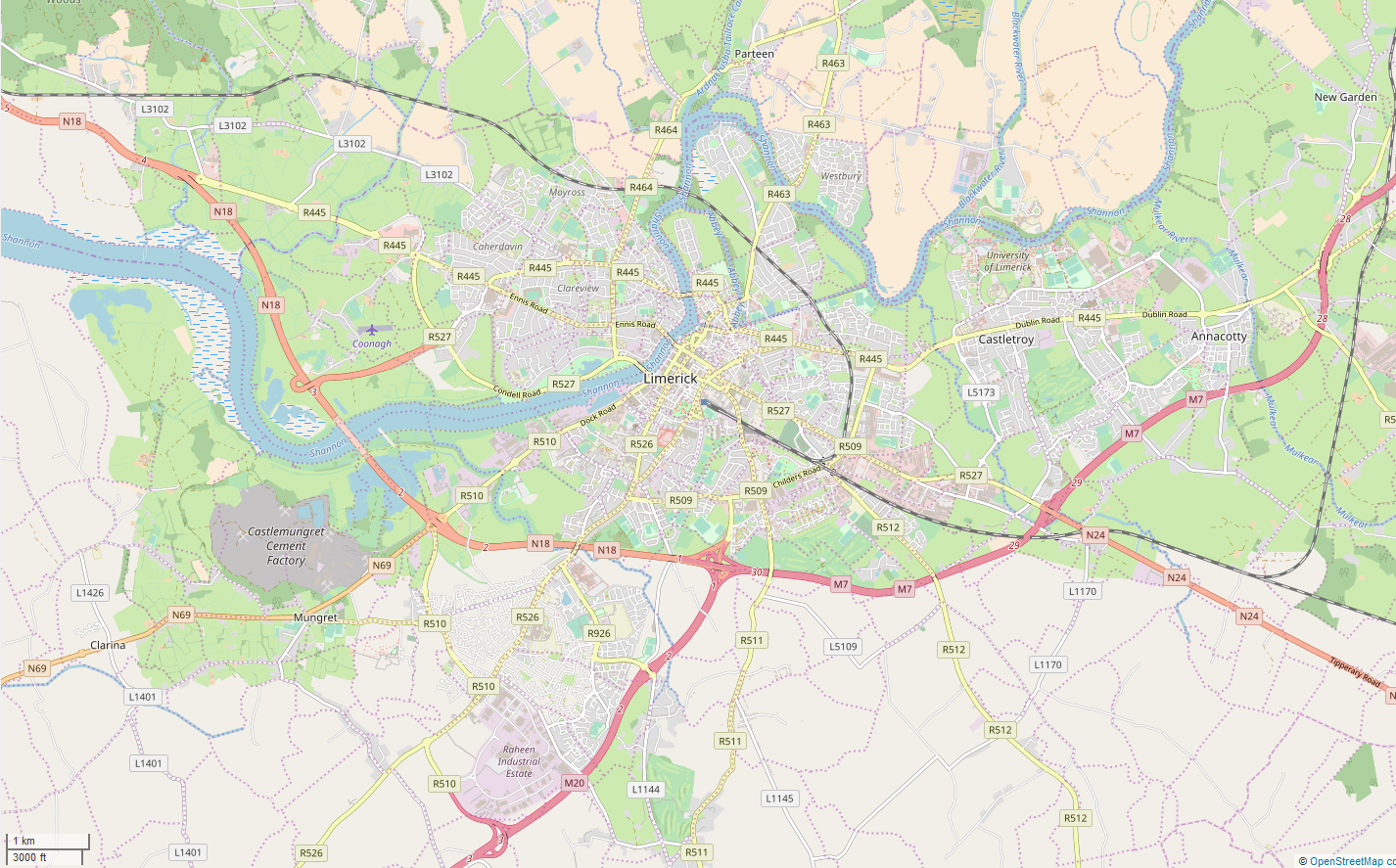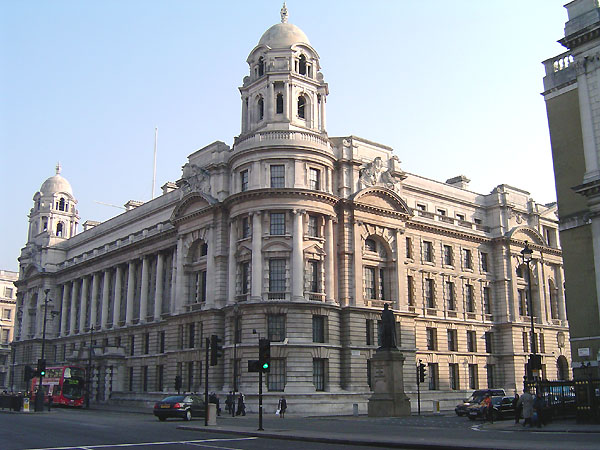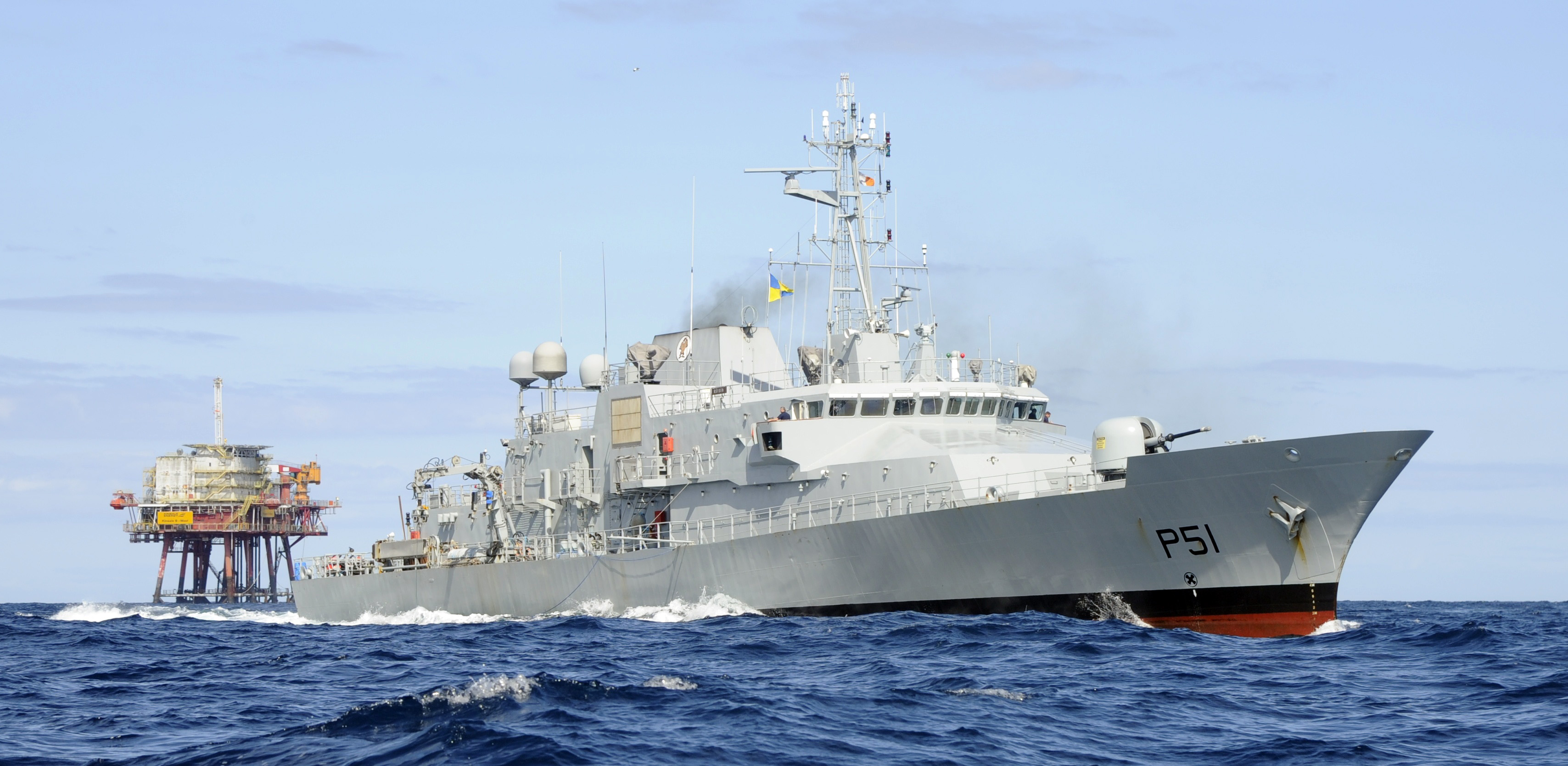|
Sarsfield Barracks
Sarsfield Barracks () is an Irish Army Barracks in Limerick city. It houses both Permanent and Reserve Defence Forces of the Irish Defence Forces. History The barracks, originally called New Barracks, were built on land leased from a Mr J.T. Monsell and were completed in 1795. The barracks were handed over to the Irish Army following Irish Independence and renamed Sarsfield Barracks after Patrick Sarsfield, a Jacobite, in 1926. The barracks remain in use and are currently the headquarters of 12th Infantry battalion. See also * List of Irish military installations This is a list of Irish military installations occupied by the Defence Forces (Ireland), Defence Forces (including Irish Army, Army, Irish Air Corps, Air Corps, Irish Naval Service, Naval Service and Reserve Defence Forces) in the Republic of Ire ... References Barracks in the Republic of Ireland Irish military bases Buildings and structures in Limerick (city) {{Ireland-struct-stub ... [...More Info...] [...Related Items...] OR: [Wikipedia] [Google] [Baidu] |
Limerick
Limerick ( ; ) is a city in western Ireland, in County Limerick. It is in the Provinces of Ireland, province of Munster and is in the Mid-West Region, Ireland, Mid-West which comprises part of the Southern Region, Ireland, Southern Region. With a population of 102,287 at the 2022 census of Ireland, 2022 census, Limerick is the List of urban areas in the Republic of Ireland, third-most populous urban area in Republic of Ireland, Ireland, and the List of settlements on the island of Ireland by population, fourth-most populous city on the island of Ireland. It was founded by Scandinavian settlers in 812, during the Viking Age. The city straddles the River Shannon, with the historic core of the city located on King's Island, Limerick, King's Island, which is bounded by the Shannon and Abbey River, Limerick, Abbey Rivers. Limerick is at the head of the Shannon Estuary, where the river widens before it flows into the Atlantic Ocean. Limerick City and County Council is the Local gov ... [...More Info...] [...Related Items...] OR: [Wikipedia] [Google] [Baidu] |
Irish Army
The Irish Army () is the land component of the Defence Forces (Ireland), Defence Forces of Republic of Ireland, Ireland.The Defence Forces are made up of the Permanent Defence Forces – the standing branches – and the Reserve Defence Forces. The Army is part of the PDF. As well as maintaining its primary roles of defending the State and internal security within the State, since 1958 the Army has had a continuous presence in peacekeeping missions around the world. The Irish Army is organised into two brigades.The Air Corps (Ireland), Air Corps and Naval Service (Ireland), Naval Service support the Army in carrying out its roles. The Army has an active establishment of 7,520, and a reserve establishment of 3,869. Like other components of the Defence Forces, the Irish Army has struggled to maintain strength and had only 6,322 active personnel, and 1,382 reserve personnel. However, the Irish government introduced several measures in an attempt to improve recruitment and retentio ... [...More Info...] [...Related Items...] OR: [Wikipedia] [Google] [Baidu] |
War Office
The War Office has referred to several British government organisations throughout history, all relating to the army. It was a department of the British Government responsible for the administration of the British Army between 1857 and 1964, at which point its functions were transferred to the new Ministry of Defence (United Kingdom), Ministry of Defence (MoD). This article contains text from this source, which is available under th Open Government Licence v3.0 © Crown copyright It was equivalent to the Admiralty (United Kingdom), Admiralty at that time, which was responsible for the Royal Navy (RN), and (much later) the Air Ministry, which oversaw the Royal Air Force (RAF). The name 'Old War Office' is also given to the former home of the department, located at the junction of Horse Guards Avenue and Whitehall in central London. The landmark building was sold on 1 March 2016 by HM Government for more than British pound, £350 million, on a 250-year lease for conversion int ... [...More Info...] [...Related Items...] OR: [Wikipedia] [Google] [Baidu] |
Permanent Defence Forces
The Defence Forces (, officially styled ) derives its origins from the Irish Volunteers. Whilst the Irish for ''Defence Forces'' is , as Ó Cearúil (1999) points out, the Defence Forces are officially styled . is used in other contexts (e.g. is ''Defence Force Regulations'') as well as having a defined meaning in legislation. are the armed forces of Ireland. They encompass the Army, Air Corps, Naval Service, and Reserve Defence Forces. The Supreme Commander of the Defence Forces is the President of Ireland. All Defence Forces officers hold their commission from the President, but in practice, the Minister for Defence acts on the President's behalf and reports to the Government of Ireland. The Minister for Defence is advised by the Council of Defence on the business of the Department of Defence. As of December 2023, there were 7,550 permanent personnel in the Defence Forces out of an established strength of 9,500, a decrease from September 2020 when there were 8,529 pers ... [...More Info...] [...Related Items...] OR: [Wikipedia] [Google] [Baidu] |
Reserve Defence Forces
The Reserve Defence Forces (RDF) () are the combined Military reserve force, reserve components of the Defence Forces (Ireland), Irish Defence Forces. The RDF is organised into the First Line Reserve (FLR) and an active Second Line Reserve. The First Line Reserve is composed of former members of the Permanent Defence Forces (PDF) and, as of August 2024, had a strength of 167. The Second Line Reserve comprises the Army Reserve (Ireland), Army Reserve (AR) with, as of August 2024, a strength of 1,456 out of an established strength of 3,869, and the Naval Service Reserve (NSR), with a strength of 97 out of an established strength of 200. The RDF was established on 1 October 2005 and replaced the Second Line Reserve, previously named ''An Fórsa Cosanta Áitiúil'' (FCÁ) in the case of the AR, and ''An Slua Muirí'' in the case of the NSR. The Reserve has undergone significant reorganisation and modernisation in tandem with the Permanent Defence Forces as part of the "Single Force ... [...More Info...] [...Related Items...] OR: [Wikipedia] [Google] [Baidu] |
Irish Defence Forces
The Defence Forces (, officially styled ) derives its origins from the Irish Volunteers. Whilst the Irish for ''Defence Forces'' is , as Ó Cearúil (1999) points out, the Defence Forces are officially styled . is used in other contexts (e.g. is ''Defence Force Regulations'') as well as having a defined meaning in legislation. are the armed forces of Ireland. They encompass the Army, Air Corps, Naval Service, and Reserve Defence Forces. The Supreme Commander of the Defence Forces is the President of Ireland. All Defence Forces officers hold their commission from the President, but in practice, the Minister for Defence acts on the President's behalf and reports to the Government of Ireland. The Minister for Defence is advised by the Council of Defence on the business of the Department of Defence. As of December 2023, there were 7,550 permanent personnel in the Defence Forces out of an established strength of 9,500, a decrease from September 2020 when there were 8,529 pers ... [...More Info...] [...Related Items...] OR: [Wikipedia] [Google] [Baidu] |
Anglo-Irish Treaty
The 1921 Anglo-Irish Treaty (), commonly known in Ireland as The Treaty and officially the Articles of Agreement for a Treaty Between Great Britain and Ireland, was an agreement between the government of the United Kingdom of Great Britain and Ireland and the government of the Irish Republic that concluded the Irish War of Independence. It provided for the establishment of the Irish Free State within a year as a self-governing dominion within the "community of nations known as the British Empire", a status "the same as that of the Dominion of Canada". It also provided Northern Ireland, which had been created by the Government of Ireland Act 1920, an option to opt out of the Irish Free State (Article 12), which was exercised by the Parliament of Northern Ireland. The agreement was signed in London on 6 December 1921, by representatives of the British government (which included Prime Minister David Lloyd George, who was head of the British delegates, and Winston Churchill, w ... [...More Info...] [...Related Items...] OR: [Wikipedia] [Google] [Baidu] |
Patrick Sarsfield, 1st Earl Of Lucan
Patrick Sarsfield, 1st Earl of Lucan ( 1655 – 21 August 1693) was an Irish army officer. Killed at Landen in 1693 while serving in the French Royal Army, he is now best remembered as an Irish patriot and military hero. Born into a wealthy Catholic family, Sarsfield began his military career during the 1672 to 1674 Third Anglo-Dutch War. After fellow Catholic James II of England was deposed by the Glorious Revolution in November 1688, Sarsfield served as a senior commander in the Jacobite army during the 1689 to 1691 Williamite War in Ireland, and was elected to the 1689 Patriot Parliament. Fighting in Ireland ended with the 1691 Treaty of Limerick. Under the agreement, thousands of Irish soldiers went into exile in France, and many served in Flanders during the Nine Years' War. They included Sarsfield, who was fatally wounded at the Battle of Landen on 29 July 1693. Personal details Originally of English descent, the Sarsfield family were wealthy Protestant Establishmen ... [...More Info...] [...Related Items...] OR: [Wikipedia] [Google] [Baidu] |
Jacobitism
Jacobitism was a political ideology advocating the restoration of the senior line of the House of Stuart to the Monarchy of the United Kingdom, British throne. When James II of England chose exile after the November 1688 Glorious Revolution, the Parliament of England ruled he had "abandoned" the English throne, which was given to his Protestant daughter Mary II of England, and his nephew, her husband William III of England, William III. On the same basis, in April the Convention of Estates (1689), Scottish Convention awarded Mary and William the throne of Scotland. The Revolution created the principle of a contract between monarch and people, which if violated meant the monarch could be removed. A key tenet of Jacobitism was that kings were appointed by God, making the post-1688 regime illegitimate. However, it also functioned as an outlet for popular discontent, and thus was a complex mix of ideas, many opposed by the Stuarts themselves. Conflict between Charles Edward Stuar ... [...More Info...] [...Related Items...] OR: [Wikipedia] [Google] [Baidu] |
List Of Irish Military Installations
This is a list of Irish military installations occupied by the Defence Forces (Ireland), Defence Forces (including Irish Army, Army, Irish Air Corps, Air Corps, Irish Naval Service, Naval Service and Reserve Defence Forces) in the Republic of Ireland by Provinces of Ireland, province and overseas. The Irish Defence Forces maintains approximately 20,000 acres of land for military training in the state. Connacht *Renmore Barracks, Renmore, County Galway *Reserve Defence Forces, RDF Clifden, County Galway *RDF Boyle, County Roscommon, Boyle, County Roscommon *RDF Sligo, County Sligo *Carnagh Rifle Range, County Roscommon *Oranmore Rifle Range, County Galway Leinster *Cathal Brugha Barracks, Rathmines, Dublin *McKee Barracks, Blackhorse Avenue, Dublin *St Bricin's Military Hospital, Dublin 7 *Casement Aerodrome, Baldonnel, County Dublin *Defence Forces Training Centre, DFTC, Curragh Camp, County Kildare *Department of Defence (Ireland), Department of Defence Headquarters, S ... [...More Info...] [...Related Items...] OR: [Wikipedia] [Google] [Baidu] |
Barracks In The Republic Of Ireland
Barracks are buildings used to accommodate military personnel and quasi-military personnel such as police. The English word originates from the 17th century via French and Italian from an old Spanish word 'soldier's tent', but today barracks are usually permanent buildings. The word may apply to separate housing blocks or to complete complexes, and the plural form often refers to a single structure and may be singular in construction. The main objective of barracks is to separate soldiers from the civilian population and reinforce discipline, training, and ''esprit de corps''. They have been called "discipline factories for soldiers". Like industrial factories, some are considered to be shoddy or dull buildings, although others are known for their magnificent architecture such as Collins Barracks in Dublin and others in Paris, Berlin, Madrid, Vienna, or London. From the rough barracks of 19th-century conscript armies, filled with hazing and illness and barely differentiated fr ... [...More Info...] [...Related Items...] OR: [Wikipedia] [Google] [Baidu] |
Irish Military Bases
Irish commonly refers to: * Someone or something of, from, or related to: ** Ireland, an island situated off the north-western coast of continental Europe ***Éire, Irish language name for the island and the sovereign state *** Erse (other), Scots language name for the Irish language or Irish people ** Republic of Ireland, a sovereign state ** Northern Ireland, a constituent unit of the United Kingdom of Great Britain and Northern Ireland * Irish language, a Celtic Goidelic language of the Indo-European language family spoken in Ireland * Irish English, set of dialects of the English language native to Ireland * Irish people, people of Irish ethnicity Irish may also refer to: Places * Irish Creek (Kansas), a stream in Kansas * Irish Creek (South Dakota), a stream in South Dakota * Irish Lake, Watonwan County, Minnesota * Irish Sea, the body of water which separates the islands of Ireland and Great Britain People * Irish (surname), a list of people * William Irish, pse ... [...More Info...] [...Related Items...] OR: [Wikipedia] [Google] [Baidu] |






